Tracing the Lineage of Final Fantasy X-2's Job System
Final Fantasy X-2 celebrates its twentieth anniversary this year, first released in Japan on March 13, 2003. FFX-2 holds the distinction of being the first true sequel to a mainline Final Fantasy title - but it has many more claims to fame besides.
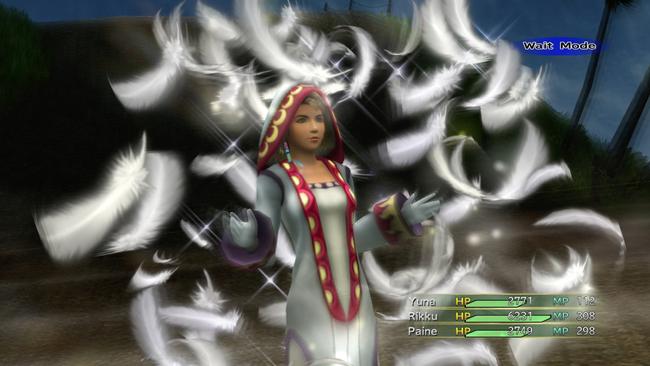
The game is notable for a variety of reasons, the least of which is a huge tonal shift. While Final Fantasy X opens with an apocalypse, its sequel begins with... a pop concert. Final Fantasy X-2 is a stark departure from its predecessor, and while people often focus on the story, this is just as true in terms of its combat. Featuring one of the sharpest iterations of the iconic Final Fantasy job system, it isn't just its direct predecessor that FFX-2 shares a lineage with. Rather, it owes a significant portion of its DNA to Final Fantasy V, a heritage which would continue a decade later with yet another sequel to a mainline title in Lightning Returns: Final Fantasy XIII.
Final Fantasy V, initially released in 1992, did not see a Western release until 1999. While this title is known for improving the 'Active Time Battle' system first introduced in Final Fantasy IV, it is most beloved for its take on the class-based job system, first introduced in Final Fantasy III. With nearly two dozen jobs, the game introduces series staples and some of my personal favorites, including the Time Mage. Aside from grinding for experience points to gain levels, players also earned Ability Points from combat. Earning sufficient ability points allowed characters to master one job and use those job-specific skills while equipped with another class.
This tweak on the formula enrichens every aspect of the job system by allowing such breadth of customization that seemingly endless job combinations exist. While each character was confined to one job at a time in Final Fantasy III, or to one job generally in Final Fantasy IV, this game allowed players to create Black Mage Summoners or Dancing Thieves, and then some. You don't have to just take my word for it, either - the scale is laid bare in our FF5 job guide.
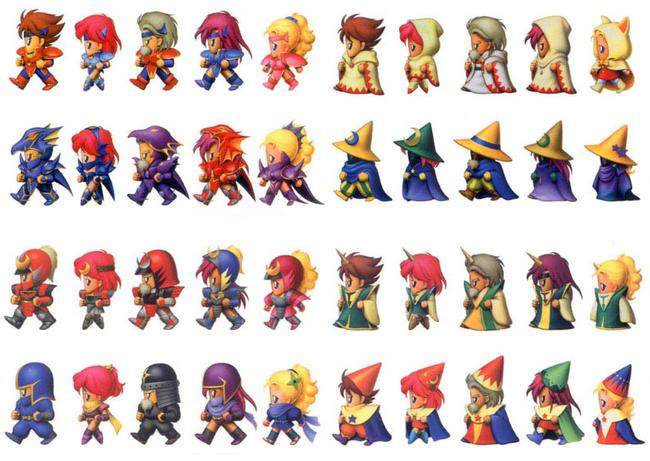
Basically, in Final Fantasy V, players can just about bring a gun to a sword fight. The series was never this customizable before, and most subsequent games would refrain from being so indulgent with open choice at the onset. That's why it's such a nice surprise to see so much of this game's DNA resurface in Final Fantasy X-2 a decade later.
The announcement of Final Fantasy X-2 was certainly a surprise: a mainline sequel was a shock in itself, but how would it fit with the story? With most of the base party excised from battle, this sequel focused on returning members Rikku and Yuna with their new partner, Paine. Where Final Fantasy X was somber and literally filled with death, Final Fantasy X-2 was seemingly the opposite. The game sang joy and feminine charm, and this was no more apparent than in the combat system. While X gave player seven disparate party members with predisposition towards certain abilities and combat roles, FFX-2 pares down the party members to three but gives near full-reign on how to use them from the start.
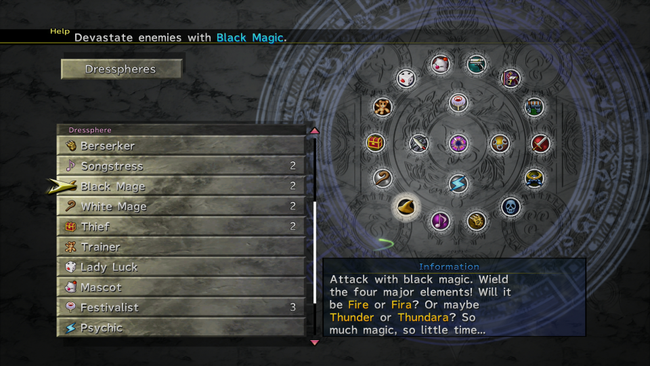
Yuna and her companions are in possession of Garment Grids, a geometric shaped tablet slotted with nodes which can be equipped with dresspheres to allow the use of specific jobs. During combat, each character can change their dresspheres (or jobs) on the fly in response to the circumstances, resulting in luxuriously skippable transformation sequences. There are over a dozen jobs available, including Gun Mage, Samurai, and Songstress.
Savvy players can unlock grid-specific bonuses by swapping through enough spheres in combat, with character-specific spheres available under specific conditions. In another callback to FFV, players earn Ability Points which are used to master abilities and jobs. Abilities are not transferable between jobs -- it's not necessary, since our gals can change as needed so long as the sphere is equipped on their grid -- but there are some grids that bestow the use of other job functions in combat.
The end result is a combat system whose simplicity belies a much more complicated nature. In Final Fantasy X-2, you actually can bring a gun mage to a knife fight. Battles are fast and furious, and players are required to manage the party from both micro- and macro perspectives, changing roles during combat based on the strengths of the individual characters while balancing the needs of the party.
Even if an enemy has a weakness to bullets, the squad cannot go in all guns blazing, because someone may need a heal in short order. That's one of the drawbacks during combat this hectic: discerning which role each member should have at each moment during combat can be overwhelming, and it is a lesson learned for the next game in the franchise to incorporate a costume-based job system.
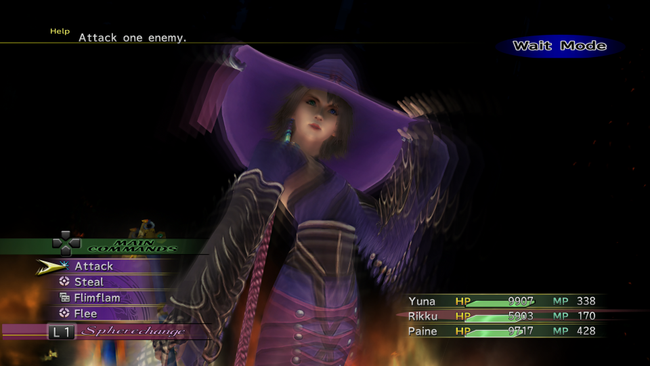
Lightning Returns: Final Fantasy XIII seemingly takes so much out of FFX-2's playbook. It's a sequel to a mainline game and is almost entirely non-linear with the bulk of the gameworld is available to players at the start. While the main story is admittedly short, the plot is buttressed by a host of sidequests which are all but necessary to advance (and in this case, vital for stat growth). To fully experience both titles, gamers should immerse themselves in these drastically changed worlds, sidequests included. Like FFX-2, combat in Lightning Returns uses a modified version of its predecessor's battle system with a skew towards frenetic. That, and costume changes.
This game boasts the Style-Change Active Time Battle System, incorporating elements from the ATB-based Paradigm system seen in the earlier XIII games with a costume system like the dresspheres seen in FFX-2. Players control Lightning in single-character action combat, alternating between different costumes (called Schema in-game) on the fly. Each Schema is akin to a job with different stats and abilities mapped to different buttons, with each action depleting the ATB meter.
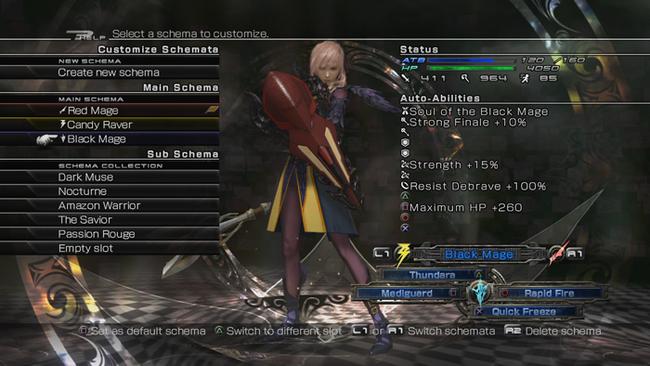
As Lightning switches between Schemata, the ones not used will regenerate ATB, necessitating players to switch jobs to utilize different abilities and recharge the ability queue. The high-wattage combat still requires strategy for success, and similar to FFX-2 and V before it, the customization allows players to prepare for combat any way they see fit.
While it is easy to discern Final Fantasy V's DNA throughout the series, it's nuance and breadth of customization is practically unmatched until Final Fantasy X-2. Similarly, Lightning Returns is a descendant in that line, marrying single-player action combat with the expansive options afforded from the dressphere system. It's been a long twenty years for the controversial Final Fantasy X-2, with some maligning the shift in tone or magical-girl style transformation sequences. Regardless of your position on the themes and presentation of the overall game, it's undeniable that FFX-2's battle system, like FFV before it, is in a class of its own.